Overview
In the last ten to fifteen years, historian systems have evolved significantly and provide a much broader set of capabilities. Companies no longer simply use historians for provide situational awareness via tag data tied to graphical plant graphical overviews. Historian vendors now strive to provide scalable analytical capabilities, empowered by digital models of the process. Alerting and event detection capabilities, as well as simplified integration capabilities have also been added. Accordingly, companies have taken strides to leverage these new features and capabilities and add significant business value. One of the chief areas where business value has been added is around optimization of operational processes.
Digital models allow companies to visualize their process and operating conditions in real-time, enabling optimal data-driven decisions that either minimize cost or maximize outputs or efficiency. One of the pre-requisites behind any optimization effort is domain expertise. Tools and software alone cannot dig up the use cases or figure out which process areas to target; subject matter experts with domain expertise are the key to implementing these use cases successfully, with technology as an enabler. This article explores a few ways in which companies are achieving this optimization. There are many ways possible and innovative users at every organization can provide ideas to resolve specific business problems
Key Questions
When striving to improve operational efficiency, the key challenges companies are looking to resolve are the following:
- How can operating costs be reduced?
- In what ways can outputs or production be increased?
- How can the time or resources consumed per unit of output be reduced?
In an ever-competitive landscape, small gains can make a big difference in the long term. Oil and gas companies must manage several key areas in an integrated way to sustain a high level of operating performance. Some of these factors include safety, reliability, operational efficiency, and cost optimization. Efficient operations enable tactical flexibility, and low-cost operators will continue to be adaptable, even during significant industry events such as price downturns. A data-driven decision-making platform is central to not only reducing costs, but also in sustaining strong performance in all key operational areas.
Reducing Energy Consumption
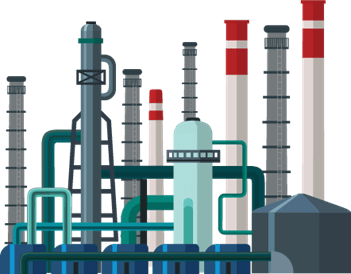
Many firms struggle to get a handle on energy consumption, often because this data is disconnected and companies find it difficult to relate this data to individual assets or process components. Digital process models allow comingling the data streams and enable a model to break down energy consumption by individual process areas.
By modeling, trending, and analyzing energy consumption data, companies can start to compare efficiency between different assets across their fleet. This can help identify new issues such as leaks or asset degradation, as well as identify inefficient or poorly performing assets.
Spend and cost optimization can also be achieved. For example, through increased integration capabilities, companies can capture and historize commodity energy prices in real-time. By doing this, operations management at plants can make informed decisions to selectively run, shut off, or change the mode of certain equipment to minimize costs. At the same time, the price analysis can also be a revenue-enhancing mechanism. For example, co-generation facilities that sell excess electricity can find optimal times to supply this power to the regional distributor.
In some markets, companies must pay for a fixed daily maximum energy capacity. They receive a financial penalty is they exceed this limit. In these scenarios, firms can set up monitoring for consumption. Alerts that are generated from this setup would fire when the projected daily consumption is higher than the capacity. Consequently, companies can ensure that they always stay below this upper limit. Companies will also consistently make faster operational decisions to slow down consumption, which over time will allow them to reduce the dedicated capacity as well.
Real-Time Pump Efficiency Analysis via Pump Curves
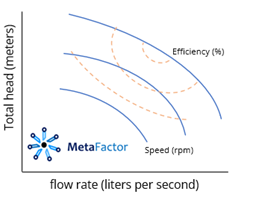
Manufacturers will typically provide pump curves, which are design tools that model a pump’s ability to produce flow under the conditions that affect pump performance. It is in the operator’s best interest to run the curve near the preferred operating region, which is a subsection of the allowable operating region within the curve.
Operators and engineers can overlay a pump’s real-time operating characteristics onto a pump curve. This will help them understand whether current operating characteristics result in efficient operations. From this analysis, they can also determine what types of operating changes would be required if the operation is inefficient.
Operators and engineers would also be able to determine how individual pumps are performing in relation to the design performance, as well as in comparison to other pumps. This will help identify potential issues with certain pumps, such as partial blockages or other mechanical failures.
Increasing Capacity Utilization
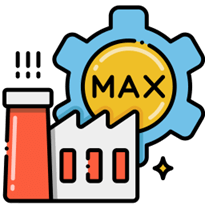
Companies can track and monitor the data around asset up-time and health to determine the asset’s capacity utilization. Using this information, firms can intelligently divert operations to unused assets and avoid unnecessary expenditures. At the same time, they can maximize capacity utilization. Operators can leverage continuous monitoring and alerting features to react to poor utilization scenarios or other operational issues.
Companies have implemented KPI management programs to enable plant management and operations teams to monitor a multitude of parameters that are crucial to plant operations. Ongoing attention to these KPIs feeds into a continuous improvement philosophy, and many have saved vast sums by implementing this data-driven management approach.
Well Tests
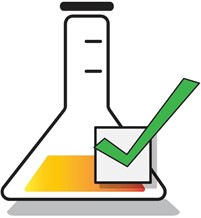
Oil and gas companies are mandated from a legal and commercial perspective to perform well tests by gathering data around well operation and efficiency. Historically, companies have used complex spreadsheet applications to handle this process. However, such processes have degraded over the years. Developers often need to intervene and modify the legacy applications to account for new assets. These conditions result in poor data reliability, since well tests may be skipped. Also, it is sometimes hard to identify the correct well being tested.
Modern historian toolsets can model the operational process and capture and contextualize events. Additionally, they provide template-based analytics. Companies have been able to leverage this modern framework to create a simplified data capture and reporting solution based on out-of-the-box tools. Consequently, companies have been able to decommission their legacy toolsets. As a result of these changes, firms have saved time and improved the quality of outputs in the process. Moreover, the ability to “go back in time” to regenerate historical reports in the case of latent data has proved valuable.
Drilling Optimization
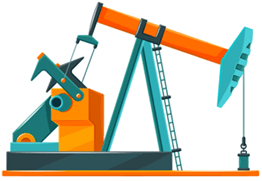
One of the most important key performance indicators in drilling operations is rate of penetration (ROP), typically measured in feet per hour. Companies can model the ROP in real-time by leveraging high-frequency historian data collected from the site. Using this data, companies can implement strategies and measures to minimize the impacts of events such as stick-slip, which impede the ROP.
The operational data collected can also be used to enable advanced analytics more suited for machine learning beyond a traditional data historian. Firms can capture and act on key events such as rotary drilling, sliding, and stick-slip. Furthermore, they can use the drilling data to calculate key metrics as well, such as ROP and rock strength. These metrics and calculations will enable monitoring scenarios, which will allow companies to understand and react to changing drill conditions and equipment health.
More recently, companies are deploying optimization algorithms and models right at the site through edge deployments. By deploying machine learning and AI models out to the site, drilling parameters can be optimized in real-time without the need to exchange data centrally or via the cloud and incur latency.
We Can Help
MetaFactor specializes in historian systems, analytical and cloud toolsets, and reporting and business intelligence tools that can help your organization achieve these benefits. We are Calgary OSIsoft PI Experts and Calgary OSIsoft AF Experts. Talk to us today to find out how we can help your company.